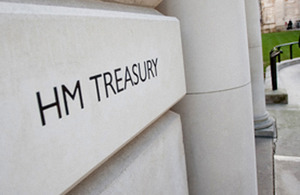Stamp duty holiday continues to help hundreds of thousands of jobs after further 21.3% boost in September
House sales rose by 21.3% in September following the introduction of the stamp duty holiday – helping to protect hundreds of thousands of jobs in the housing sector and wider supply chain, new figures revealed today.

- residential property transactions rose 21.3% in September following introduction of stamp duty holiday
- rise in sales supports hundreds of thousands of jobs in the sector – with new homeowners also spending extra cash on decorating, furniture and appliances
- 33% of homebuyers plan to spend their savings from the tax break on home improvement and renovations, boosting business and jobs
After a 15.6% rise in August, residential property transactions in September rose a further 21.3% as more people decided to buy a new home or move house. The increase in transactions came after the Chancellor announced a stamp duty holiday at the start of July that will last until March next year.
The move has helped to protect hundreds of thousands of jobs, benefitting businesses across the housing supply chain and beyond, with the Bank of England estimating that households who move home are much more likely to purchase a range of durable goods, such as furniture, carpets or major appliances.
It is expected that among others housebuilders, estate agents, tradespeople, DIY stores, removal and cleaning firms could all benefit from the increased activity.
Chancellor Rishi Sunak said:
With a third of Brits planning to spend savings from the tax break on home improvements and renovations, the temporary stamp duty cut is boosting business and protecting jobs.
This ranges from carpenters to cleaners, brickies and decorators, they can all benefit from each sale – helping us to further deliver on our Plan for Jobs.
As part of its Plan for Jobs, the government introduced a temporary stamp duty holiday for residential properties worth up to £500,000 effective from 8 July 2020 until 31 March 2021.
The holiday means nine out of ten people getting on or moving up the property ladder will pay no Stamp Duty Land Tax (SDLT) at all. This measure delivers an average saving of £4,500 in SDLT.
The government wants people to feel confident to move, to buy, to sell, to renovate, and to improve their homes, driving growth and supporting jobs.
This comes on top of figures from the Building Societies Association which show that there has been a marked uplift in the number of people who say that now is a good time to buy a property this quarter - 37% in September compared to 25% in June.
Further information
- As part of its Plan for Jobs (PDF, 378 KB), the government has temporarily increased the Nil Rate Band of Residential SDLT, in England and Northern Ireland, from £125,000 to £500,000. This applies from 8 July 2020 until 31 March 2021 and cuts the tax due for everyone who would have paid SDLT. Nearly nine out of ten people getting on or moving up the property ladder will pay no SDLT at all.
- 87% of Primary Residence transactions in England and NI will no longer pay any SDLT, 93% outside of London and SE.
- The Home Builders Federation (PDF, 2.2 MB) estimate that 240,000 people are directly employed by housebuilders and their contractors and the sector supports a further 300,000-500,000 people indirectly employed.
- In 2019, expenditure on home-move related items was around 5% of total consumption (ONS National Accounts data).
- SDLT is devolved in Scotland and Wales. The Scottish and Welsh governments benefited from this SDLT cut through an increase in their block grants, enabling them to provide a similar tax cut.
Please see below for figures from:
- Bank of England (PDF, 293 KB)
- Building Societies Association
- 33% of buyers plan to spend SDLT savings on home improvements - Checkatrade
- National Statistics: monthly property transaction statistics